In photos: NASA's SLS megarocket core stage arrives in Florida for 1st Artemis moon mission

CAPE CANAVERAL, Fla. — NASA's next megarocket for the moon, the Space Launch System (SLS) has arrived in Florida. The behemoth's core stage arrived at NASA's Kennedy Space Center via barge last Tuesday evening (April 27).
After a decade in the making, the agency celebrated as the core stage rolled into the Vehicle Assembly Building (VAB) two days later (April 29), marking the first time that all of the rocket's components were in the same place.
Decked out in orange foam insulation, the megarocket will spend the next few weeks in the transfer aisle of the VAB before it joins the two solid rocket boosters that are already stacked in High Bay 3.
Related: Kablam! Watch NASA crush a SLS megarocket fuel tank until it explodes (video)
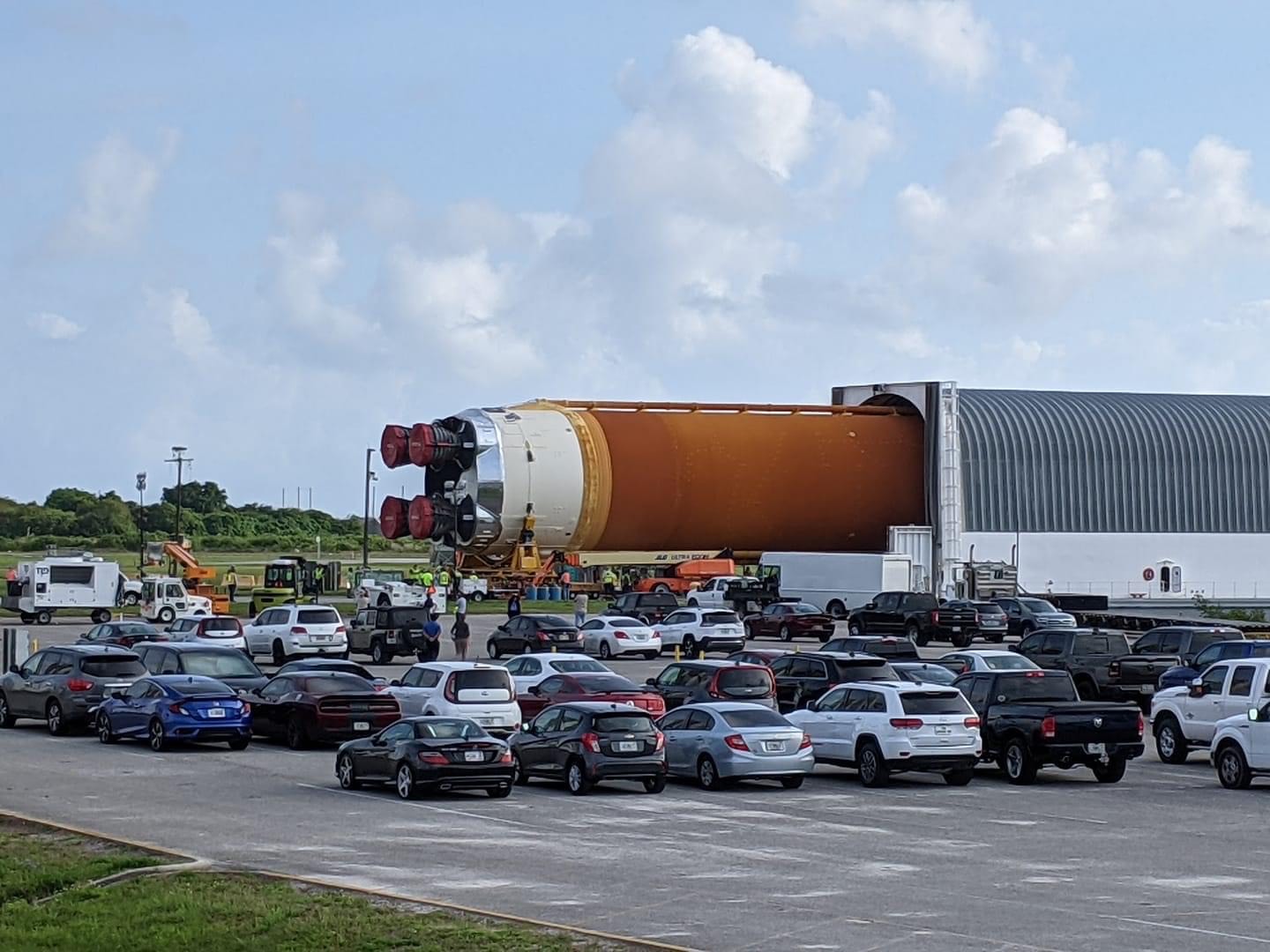
This summer, the agency's new Orion crew capsule will be mated with the SLS and prepared to blast off on an uncrewed test flight around the moon later this year as part of the Artemis 1 mission. If all goes as planned, agency officials said that the flight could take place as early as November.
On Tuesday afternoon, the Pegasus barge — a vessel that was once used to transport external tanks for the space shuttle program — sailed into Port Canaveral, floating by the recently returned SpaceX Crew-2 Falcon 9 booster, on its way to the dock at Kennedy Space Center.
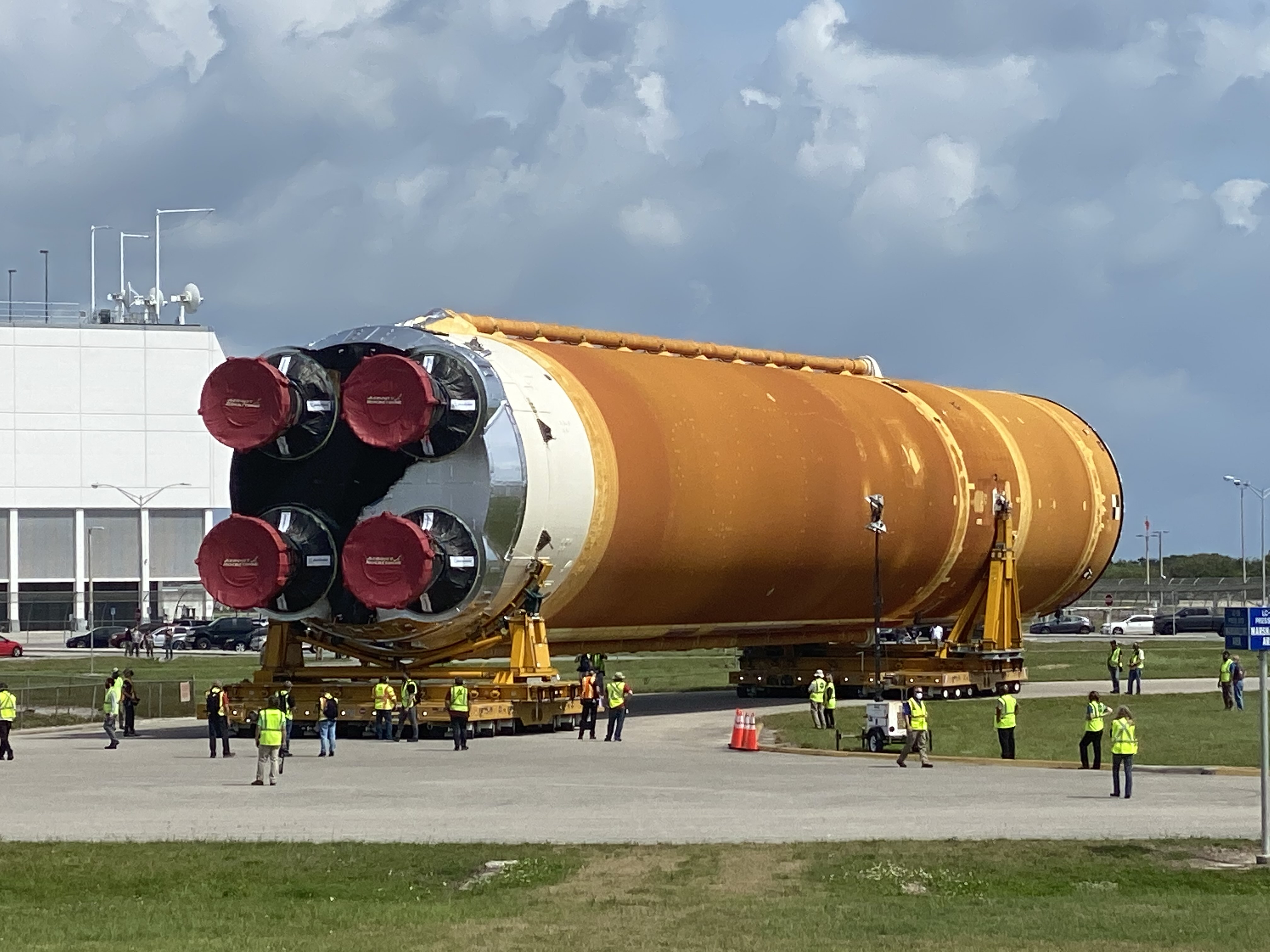
Ground teams worked to prepare the massive rocket for offloading, which was scheduled for early Thursday morning (April 29). After a slight delay, the rocket began to emerge from its transporter around 8:30 a.m. EDT (1230 GMT).
Get the Space.com Newsletter
Breaking space news, the latest updates on rocket launches, skywatching events and more!
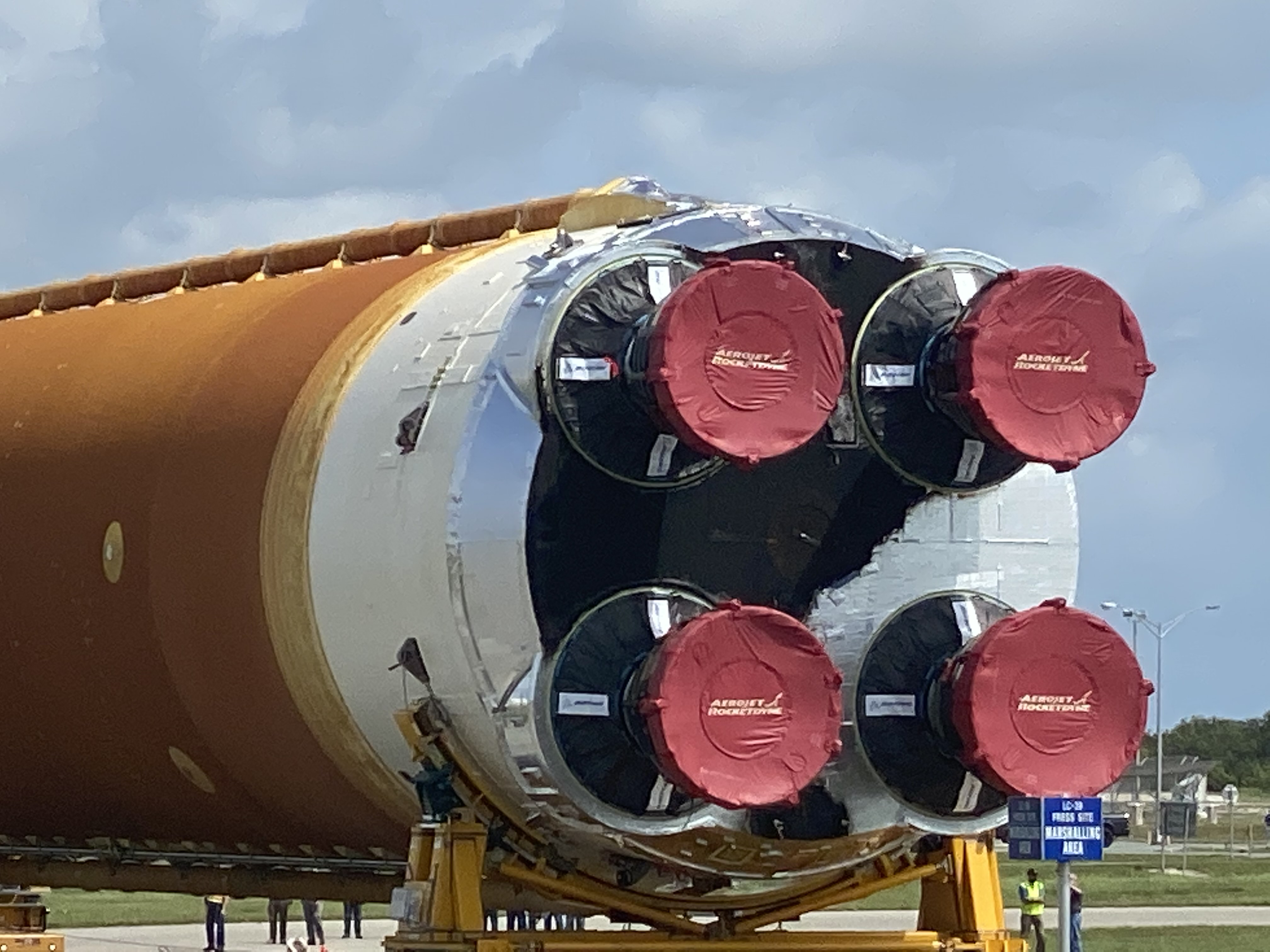
Four RS-25 engines, the same engine that powered the space shuttle, peeked out of the barge, followed by the bright orange core stage. Built by Boeing, the core stage stands 212 feet tall (64.6 meters) and 27.6 feet wide (8.4 m). It holds roughly the 730,000 gallons (2.8 million liters) of liquid hydrogen and liquid oxygen it takes to power the gigantic vehicle.
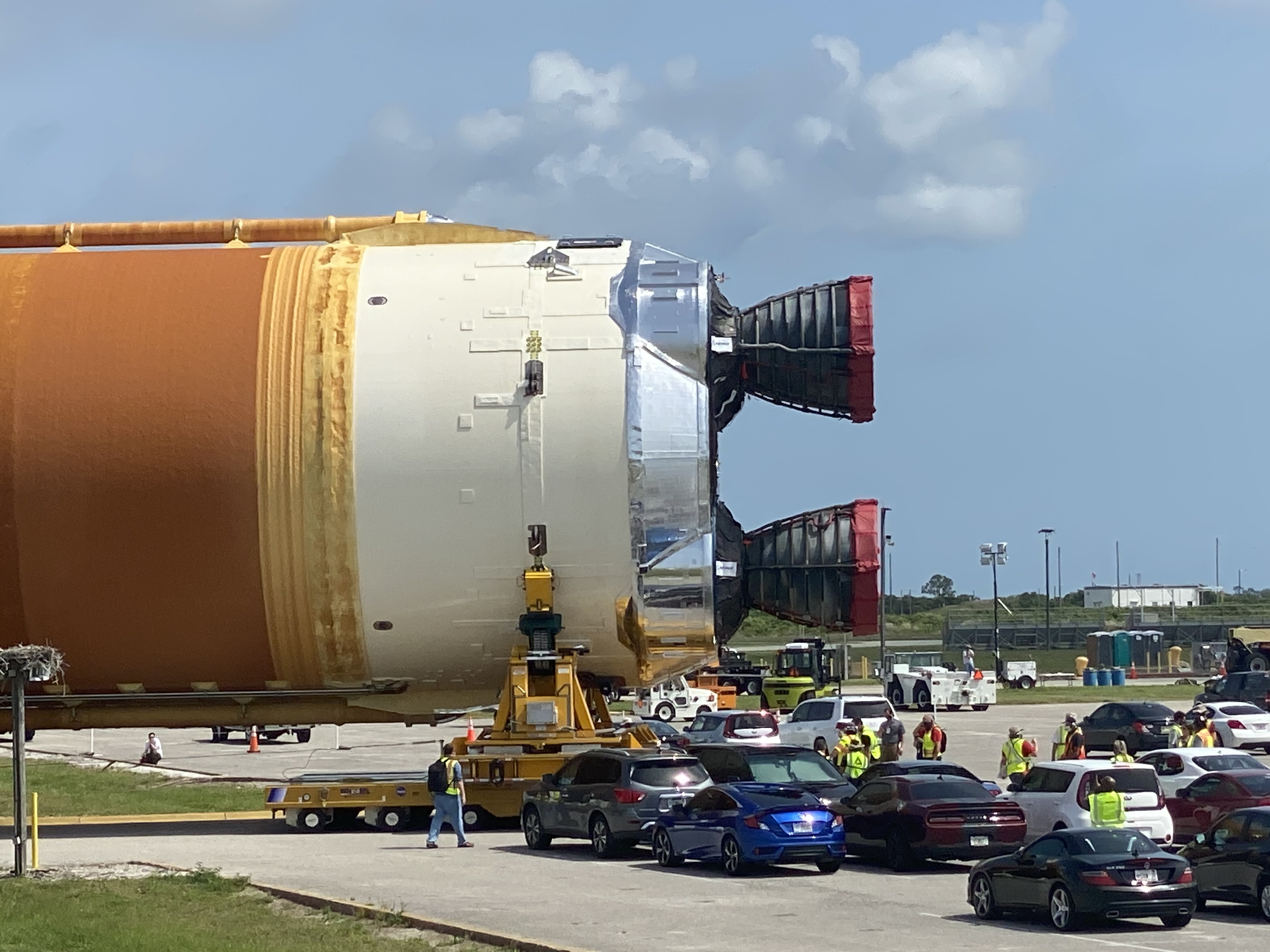
Engineers test-fired the four RS-25 engines, which were built by Aerojet Rocketdyne, as part of a hot fire test at NASA's Stennis Space Center in Mississippi, on March 18. The test, which was a repeat of an identical test that ended prematurely back in January, was the final major test of the core stage before shipping to the launch site. Simulating a real launch, the engines were fired up and burned for more than eight minutes, firmly affixed to a test stand.
Related: NASA fires up its 1st SLS megarocket for moon flights in a critical engine test
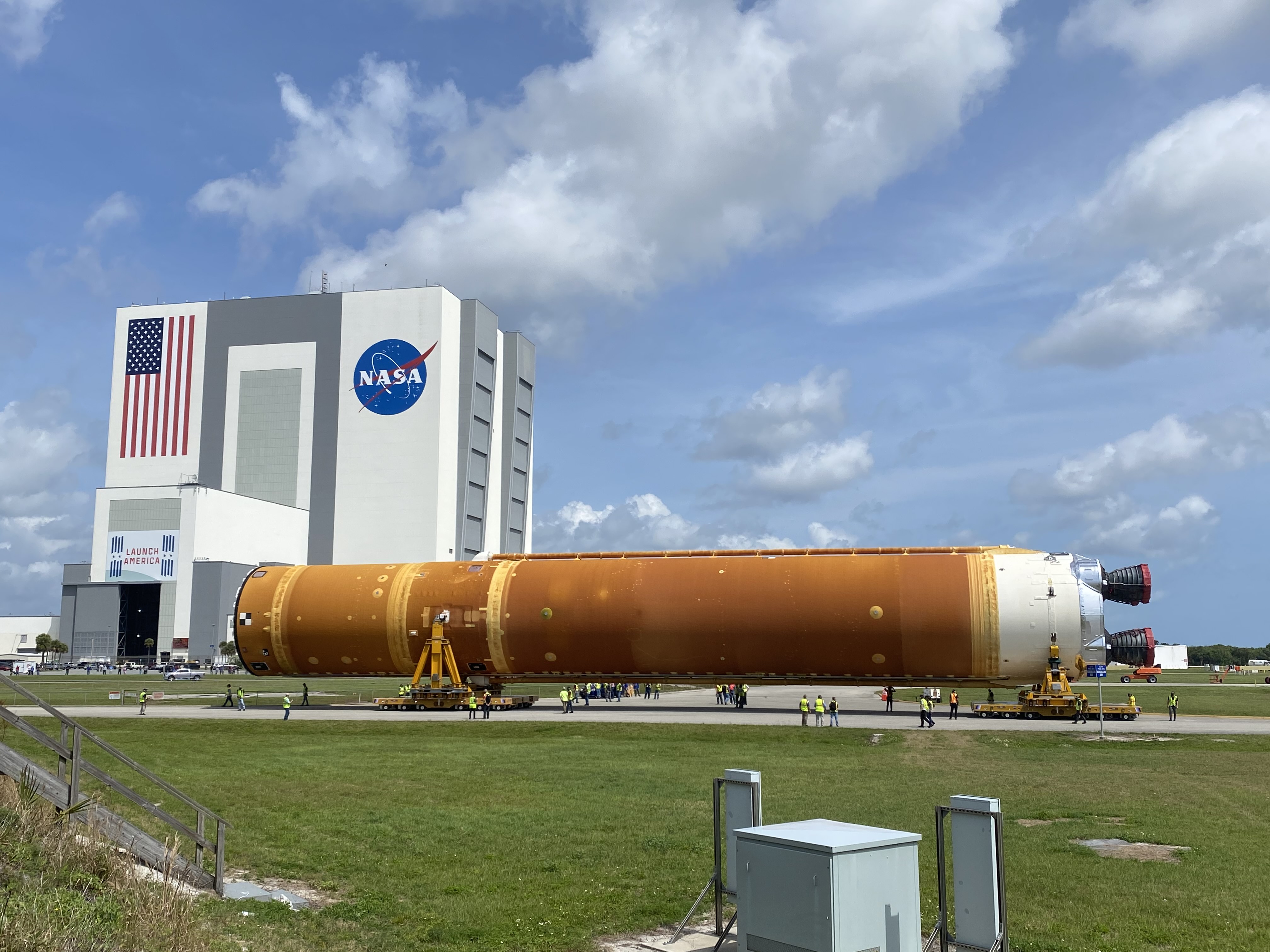
After that test was declared a success, the vehicle was readied for its trip to Florida. Once it's fully assembled, the SLS and its Orion spacecraft will stand approximately 322 feet (98 m) tall. Together, its four RS-25 engines and twin solid rocket boosters will generate more than 8 million pounds of thrust.
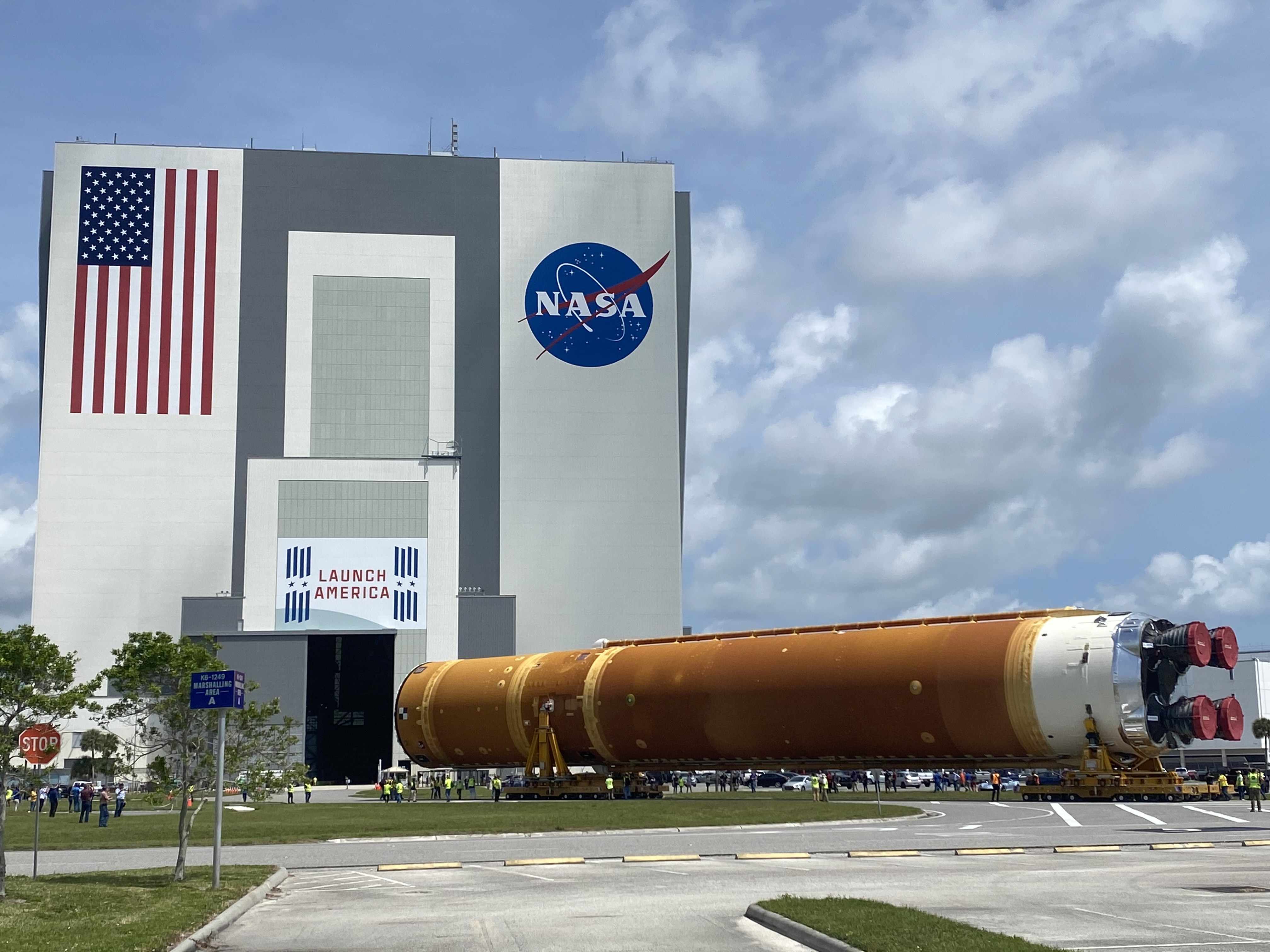
Once NASA assembles the rocket components, it plans to roll the SLS out of the VAB and to the launch pad for the first time. Once perched atop Pad 39B, the teams will put the rocket through a wet dress rehearsal. During this crucial preflight test, the launch team will load the rocket with propellants and practice countdown procedures.
In Photos: NASA's Kennedy Space Center renovates Launch Pad 39B for Orion
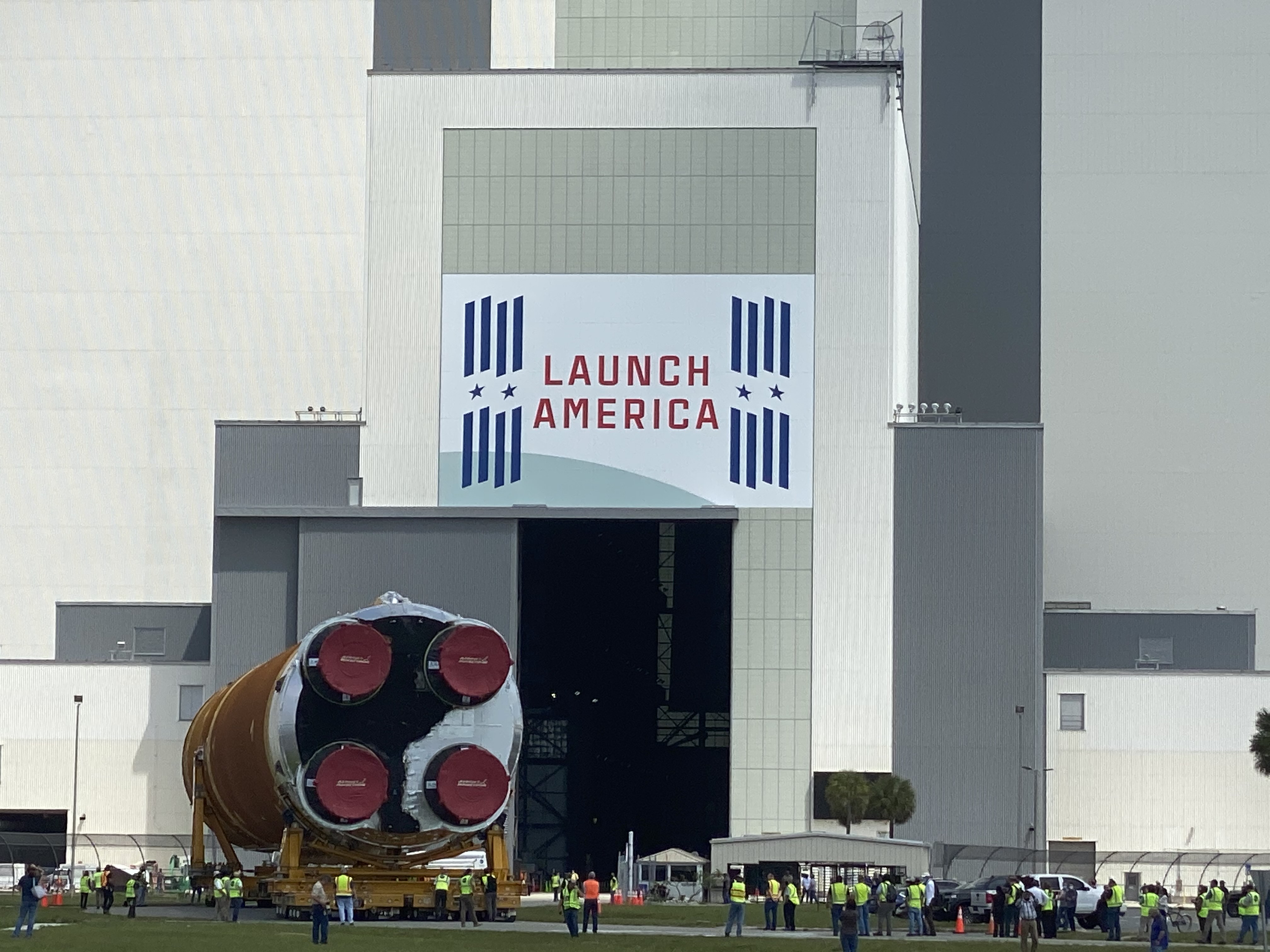
It will then trek back to the VAB and await its launch. That highly-anticipated liftoff is estimated for sometime later this year.
Follow Amy Thompson on Twitter @astrogingersnap. Follow us on Twitter @Spacedotcom or Facebook.
Join our Space Forums to keep talking space on the latest missions, night sky and more! And if you have a news tip, correction or comment, let us know at: community@space.com.

Amy Thompson is a Florida-based space and science journalist, who joined Space.com as a contributing writer in 2015. She's passionate about all things space and is a huge science and science-fiction geek. Star Wars is her favorite fandom, with that sassy little droid, R2D2 being her favorite. She studied science at the University of Florida, earning a degree in microbiology. Her work has also been published in Newsweek, VICE, Smithsonian, and many more. Now she chases rockets, writing about launches, commercial space, space station science, and everything in between.









